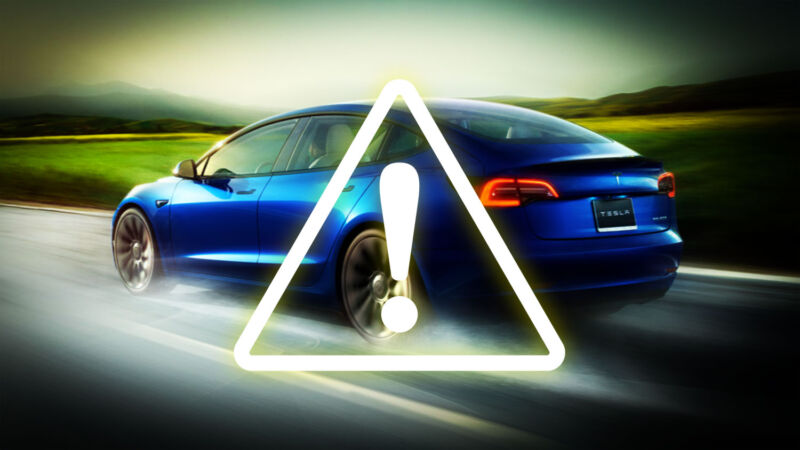
Tesla is facing a new headache this week. The National Highway Traffic Safety Administration has opened an investigation into a "phantom braking" problem after receiving hundreds of complaints from owners of recent Models 3 and Y. In total, the NHTSA says that about 416,000 cars are affected.
In May 2021, Tesla decided to remove the forward-looking radar sensor from the Model 3 and Model Y EVs. This sensor was used by some of the cars' advanced driver-assistance systems, like adaptive cruise control, forward collision warning, and automatic emergency braking.
Instead, new Teslas built for the North American market rely entirely on cameras. At the time of the removal, Tesla noted that the change meant the cars' forward collision warning and automatic emergency braking functions were no longer rated by the NHTSA but that the company expected that rating to happen "in the coming weeks."
In December 2021, the Insurance Institute for Highway Safety tested Tesla's camera system and came away happy enough to award the Model Y a "Top Safety Pick+" rating. The NHTSA has yet to follow suit.
The move to an entirely camera-based approach for Tesla's ADAS suite has not been without issues. Specifically, there have been problems with the automatic emergency braking function activating due to false positives caused by things like a shadow that the car interprets as an obstacle.
In November 2021, Tesla issued a recall for a phantom braking problem with its "Full Self-Driving (FSD) Beta" driver-assistance system. The recall affected nearly 12,000 Teslas—only those whose owners had paid for the FSD feature and been accepted into the beta testing program.
But the problem of phantom braking is not limited to the controversial FSD mode. In early February, The Washington Post reported on a growing number of complaints made to the NHTSA by Tesla owners, who told the agency about situations in which their cars slammed on the brakes at inappropriate times (for example, when driving at highway speed), mistakenly believing an obstacle was ahead.
The article in the Post caused something of a snowball effect; on Thursday, the Post reported that the NHTSA has received another 250 complaints from owners over the course of two weeks. Frequently, the complaints involved a scenario in which a large truck in the distance was driving toward a Tesla.
The number of complaints was evidently sufficient for the agency to open an inquiry; this will be its third open investigation into Tesla. The NHTSA has also been conducting an investigation into the propensity of earlier (radar-equipped) Teslas to crash into emergency vehicles and yet another into the automaker's now-disabled feature that allowed occupants to play video games on the car's infotainment screen while the vehicle was in motion.
reader comments
440